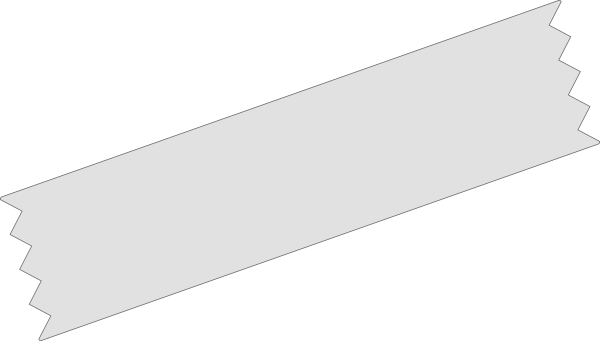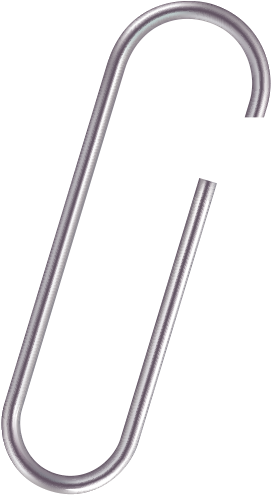How to Journal When Your Mind Feels Like a Mess — Summary
by milk and cookies
Journaling isn’t about structure, eloquence, or having it all together. It’s about presence. A quiet return to yourself. Unlike productivity hacks, journaling creates space to be honest—unfiltered, uncertain, and wholly human.
Throughout history, writers like Marcus Aurelius and Virginia Woolf turned to journals not to impress, but to understand themselves. Neuroscience now echoes what they knew: journaling doesn’t just feel good—it rewires the brain, quiets anxiety, and sharpens clarity.
Whether you’re overwhelmed, healing, dreaming, or just curious, there’s a journaling style for you: stream-of-consciousness rambles, morning pages, gratitude logs, unsent letters, or simple lists. There’s no right way—only your way.
You can keep a personal diary, a dream journal, a bullet journal, or even a prayer log. Use pen and paper, or type. You’re not writing to be good—you’re writing to be real. The goal is not polish. It’s truth.
Start small. One sentence. One breath. Your journal will always be there when you return. And in a world that demands performance, journaling offers a rare gift: the chance to be honest—with no audience but yourself.
Different Journals for Different Parts of You
Beyond the how, there’s also the where. Here are beautiful, varied types of journals that reflect different corners of the self:
- Personal diary: The classic. Use it to process your day, your emotions, or your dreams. The most familiar and forgiving form.
- Commonplace book: Collect quotes, lyrics, lines from books, ideas worth keeping. A living archive of your intellectual and emotional obsessions.
- Dream journal: Record what you remember right after waking. Dreams are weird but meaningful—they can reveal your subconscious at play.
- Travel journal: For capturing impressions from places you visit. Sensory details, conversations, little maps and mementos. Makes a memory into a story.
- Sketch journal: Not everything needs words. Draw, doodle, make little visual records of what you’re noticing or feeling.
- Idea log / Creativity journal: A brain-dump space for business ideas, captions, workshop titles, product concepts, or half-thought poems.
- Bullet journal: A hybrid planner-diary for the organized dreamer. Habit trackers, goals, gratitude logs, and reflections, all in one space.
- Nature journal: Record what you see outside. It teaches you to slow down and observe the world. A quiet ritual of seasonal presence.
- Spiritual or prayer journal: A place to write to something bigger. Letters to God, the universe, or simply your wiser self.
- Digital vs. analog: No need to choose. Some people love the romance of pen and paper. Others love searchable digital notes. Both are valid, and can co-exist.

Modern Autodidact System: Step-by-Step Summary
1. Choose a Broad Discipline to Explore
Think in terms of academic majors: Philosophy, History, Environmental Science, Literature, etc.
This becomes your “degree track.”
Start broad, then narrow down organically as your interests emerge.
2. Define Why You’re Studying It
Reflect deeply: What fuels your motivation? (e.g. personal inadequacy, career goals, intellectual ambition).
Write it down. Revisit when you hit a slump.
3. Take a “Curiosity Temperature Check”
Read 2–3 engaging, beginner-friendly books.
Examples: Freakonomics for economics, Sapiens for history, The Selfish Gene for biology.
Supplement with podcasts, YouTube, Substacks to immerse yourself.
4. Complete an Introductory Course
Platforms: Open Yale Courses, Coursera, edX, Crash Course.
Get an overview: big ideas, major thinkers, foundational terminology.
Optional: listen passively (e.g. on walks), but taking notes boosts retention.
5. Create or Take 3–4 Subdiscipline Courses
Dive into subtopics: e.g. political philosophy, metaphysics, logic (for Philosophy).
If no course exists, build one using:
- College syllabi (MIT OCW, university websites)
- DIY booklists, lectures, or even AI-generated outlines (e.g. from ChatGPT)
6. Study 4+ Canonical Works Deeply
Use resources like Academic Influence to identify the most influential texts.
Read slowly. Take notes in a dedicated subject notebook.
Engage with the text: highlight, annotate, reflect, rephrase key ideas.
7. Optional: Create Output
Write essays, record videos, teach someone else, or join online forums.
This helps solidify your understanding and builds intellectual confidence.
Extra Techniques & Tips
- Note-Taking Strategy: After the lecture (retrieval practice).
- Keep Subject Notebooks: Handwritten or digital—whatever encourages reflection.
- Use AI (like ChatGPT): For quick course design, reading suggestions, clarifications.
- Don’t Force It: If a subject starts to feel dead, pivot. Curiosity is fuel.

Adult Hobbies Worth Trying
None of these things will make you famous. None will get you promoted. You probably won’t even be that good at most of them. But that’s the point.
Creative Imperfection
- Learn how to make very bad pottery: Cups that wobble and can’t be gifted. Letting things be imperfect on purpose is healing.
- Paint thrifted mugs: No rules. Just color and joy.
- Make friendship bracelets for nobody: Because your hands deserve something repetitive and small to do.
- Write poems you never show anyone: Words just for you are still worth writing.
- Embroider bad words onto pretty fabric: Beautiful chaos.
- Junk journaling: Turn your everyday scraps—receipts, tickets, packaging—into messy, beautiful, personal pages.
Nature, Stillness, and Noticing
- Keep a tiny herb garden: Even if only the mint survives. Snip basil into pasta like a wizard.
- Try birdwatching: Even in cities. Pigeons do weird hops when they think you’re not watching.
- Take photos without being a photographer: Capture light, color, and weird little moments.
Slow Crafts & Cozy Creations
- Learn to knit badly: Lumpy scarves and wobbly blankets count. It’s the time spent that matters.
- Diamond painting: Cross-stitch meets glitter. Meditative and weirdly satisfying.
- Punch needle embroidery: Paint with yarn. Beginner-friendly and perfectly imperfect.
- Beaded jewelry making: String tiny colors into tiny wearable triumphs.
- Stained glass crafting: Beginner-friendly magic that feels medieval.
- Candle making: Mix your own scents, pour your own calm. Instant spa energy.
- “Grandma” hobbies: Crocheting, sewing, quilting. Slow is in again.
Movement and Mindfulness
- Practice bad dancing: In your kitchen. To songs you forgot you loved. Be a joyful mess.
- Adult ballet or dance classes: Rediscover movement for the joy of it.
- Pick up calligraphy or hand lettering: Because beauty can happen one slow line at a time.
- Start journaling without pressure: The page is a safe place for your brain to spill.
Whimsy, Rituals, and Small Experiments
- Learn how to make a cocktail or mocktail you love: Slice limes. Light candles. Be your own favorite bartender.
- Invent a signature omelette: Make it yours. Add too much cheese.
- Buy a jigsaw puzzle: Leave it half-finished on your table. Progress is hope in pieces.
- Learn how to shuffle cards dramatically: No poker needed. Just flair.
- Attempt to fix your own bike (and fail charmingly): Effort is art.
- Bake terrible bread that refuses to rise: It still counts. You're still a baker.
Delight in the Random
- Find a weirdly specific YouTube niche: Rollercoaster history? Antique furniture restoration? Dive in.
- Memorize poetry for no reason: Just because words are nice to carry around.
- Volunteer to walk dogs at a shelter: Joy. Wagging tails. Fresh air. Enough said.
“You don’t have to be good at your hobbies. You just have to let them remind you that being alive is weird and beautiful.”


Summary of “11 Whimsical Habits to Keep You from Spiraling into the Darkness” by Caylee Ashwell
Original article: Read the Substack
- Buy weekly flowers – Add natural beauty and joy to your space affordably.
- Customize Spotify playlists – Make music listening more fun and mood-specific.
- Dress up, even when working from home – Boost productivity and self-esteem with intentional outfits.
- Use Pinterest for inspiration – Break out of trend cycles and spark creativity.
- Keep a regular beauty treatment – Rituals like manicures can maintain a sense of order and care.
- Wear matching pajamas – Feel like the “main character” even in your downtime.
- Create with your hands – Embrace crafting, cooking, or journaling to reconnect with creativity.
- Treat yourself on payday – Make financial milestones joyful with small, consistent indulgences.
- Shop local – Support your community and create more intentional shopping habits.
- Plate your "girl dinner" beautifully – Elevate simple meals with thoughtful presentation.
- Write love letters – Share meaningful words with loved ones, especially women you admire.
Summary of “Seven Hard-Earned Lessons That You Can Only Discover as You Get Older” by Jerry Keszka
Read the Substack- You must ask for what you want – No one can read your mind. Success requires clear asks and action.
- Follow the 5x5 rule – If it won’t matter in five years, don’t spend more than five minutes stressing over it.
- Easy choices rarely lead to growth – The more difficult path usually brings greater development and reward.
- Regret is worse than failure – It’s better to try and fail than to live with “what if.”
- Change is constant and inevitable – Adaptability is key to resilience and happiness.
- You are responsible for your own happiness – It comes from within, not from others or circumstances.
- Stop unfavorable comparisons – Everyone’s path is different. Comparing leads to dissatisfaction and illusion.
This article encourages living intentionally, embracing change, and practicing gratitude and self-awareness.



